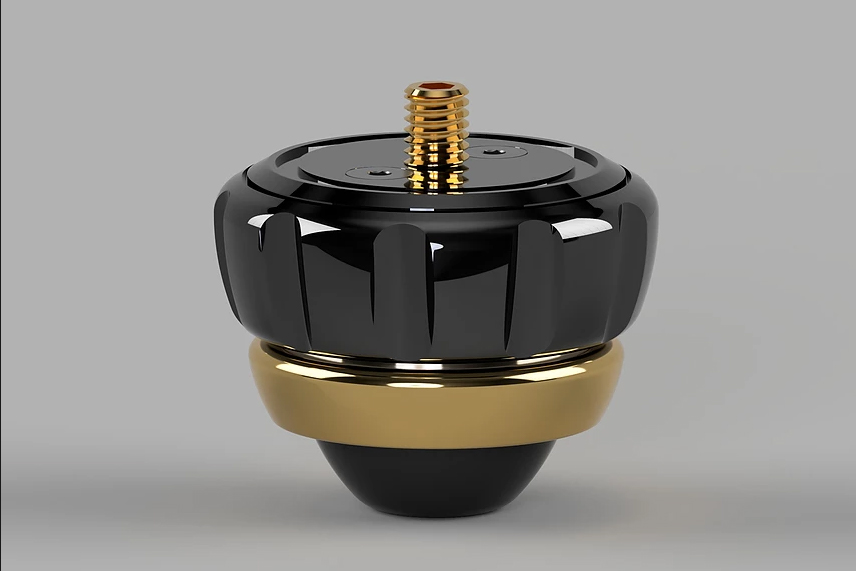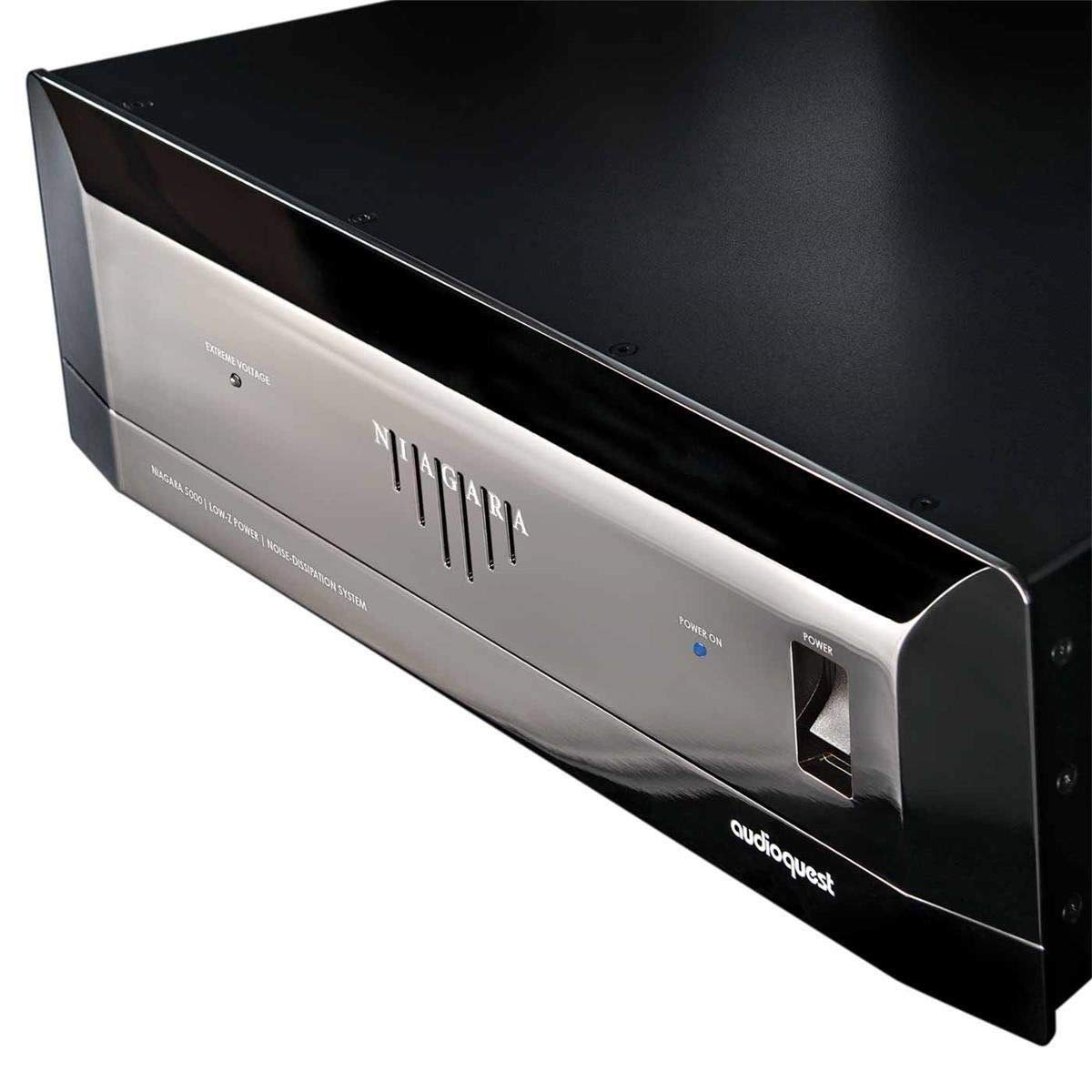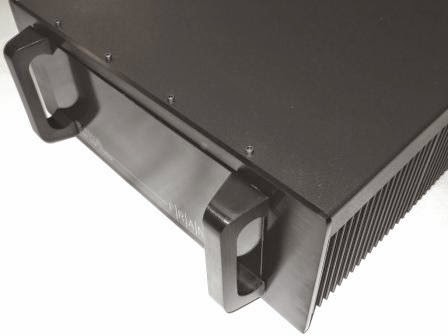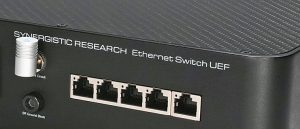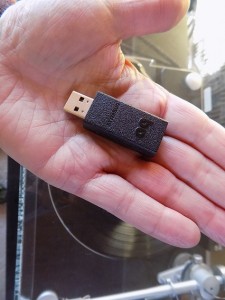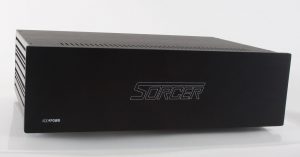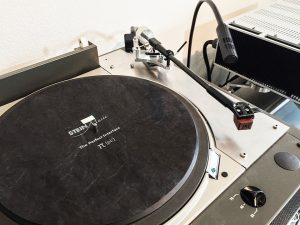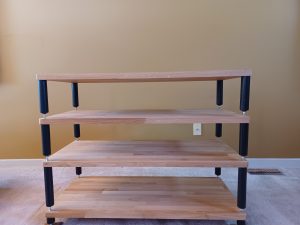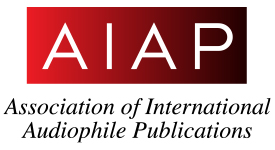Audiophiles are a compulsive bunch. They will try just about anything and everything when it comes to improving the sound of their systems. One very common recourse for mitigating this affliction is tweaking. Tweaking is a repetitive, at times even incessant activity where fine mechanical or electronic adjustments are made in attempts to achieve a higher level of sonic performance. 95 % of all audiophiles admit that they tweak, the other 5% are liars.
One of the most popular tweaks in audiophile circles deals with equipment support techniques. Maybe it's a credit to human inventiveness or maybe sheer desperation, but the available options in this category are countless. They turn up in a wide variety of configurations such as cones, pucks, spheres, and platforms. And let's not forget the wide range of material choices that also come into play.
Along with interest and demand comes sophistication. As the array of the support enhancements evolved, so did refinement and effectiveness.
As I recollect, it was Steve McCormack of The Mod Squad who was the first to take an engineering approach to designing a well thought out and effective support component, the Tiptoes. He researched alloys and shapes to realize the final configuration of the Tiptoes, an inverted metal cone roughly 1" in diameter and 1" tall. Steve's offering took the industry by storm. That happened in 1985.
Of course, many imitators surfaced with copious variations on the conical theme.
A significantly different tack was taken by Peter Bizlewiz of Symposium Acoustics in 1997 when he introduced the Roller Block, a complete departure from the cone approach. Peter took a small, very hard ball bearing, about 0.25" in diameter, and had it seated in a concave depression in a damped metal block, basically a sphere in a cup design.
From these respectful beginnings the equipment support industry really took off generating more complex and rigorously engineered products. Today we have Stillpoints, Nordost SortKones Sort Fut, Critical Mass Center Stage, Aurios, Iso Acoustics, Ginkgo Audio, and HRS Nimbus Footers, to name a few.
As a matter of fact, a whole new sector of the audio high end industry, devoted entirely to audio equipment support components, has been established.
The New Kid On The Block
Enter the RevOpod Damping Foot, a new equipment support product that came to my attention while reading a review by Robert Harley in TAS (Issue 312) of the Wadax Reference DAC. What impressed me was not only how Robert described the effectiveness of the RevOpods for improving the performance of this state-of-the-art $145,000 (Wadax Reference DAC) component, but it was the accompanying image of the cross section depicting the internal construction of this unit that really fascinated me. Here was a clear cut rendering of this support device where every detail of the intricate architecture was revealed. It was the elegant complexity contained in a very small space that had my head spinning.
Of course, I immediately contacted Arya Labs, the parent company of RevOpods. It turned out that the RevOpod is the brainchild of Arthur Marker, who founded Arya Labs in 2017. This is a British company solely devoted to cutting edge research and development of three specific products: the AirBlade loudspeaker driver, the Kappa Series audio cables, and the RevOpod Damping Foot.
Arthur promptly put me in touch with their US distributor Ronald Bluffington of Liquid Hi-Fi in Indian Land, SC, who kindly supplied me with two sets of RevOpod Damping Feet.
The purpose of the RevOpod Damping Foot is to disband vibrations in audio equipment. It is intended to be placed under a component or, for a really maximized tight and secure mechanical bond, it can be firmly attached to the base plate of that item with thread adapters. The Footers are supplied in sets of four units. Also included are three sets of thread adapters that can be used to fasten the Footers to the equipment to be supported. The RevOpod lineup features a multitude of color schemes. A complement of four will support a load of up to 120 kg.
According to Arya Labs: "We have analyzed the vibration patterns of various audio equipment including loudspeakers, amplifiers, and turntables, and evaluated the effectiveness of different vibration control strategies. To our surprise the best strategy turned out to be one that is not usually used in audio but is rather found in civil engineering. For the vibration control of heavy structures such as bridges, civil engineers make use of so-called pot bearings. This type of bearing is very compact and provides efficient damping through compression of a confined elastomeric disc whilst allowing displacement in the horizontal plane. This strategy is particularly interesting for audio applications because, as our research has shown, the best approach to deal with vibrations is not by trying to fix the components rigidly in place but rather allowing limited movement in all directions. By damping this motion through dedicated measures the vibration can then be effectively controlled to significantly reduce unwanted distortion."
The RevOpod Damping Foot is an astonishing piece of engineering. It consists of 35 individual CNC machined component pieces. Moreover, all that precision and exactitude is found in a cone-like device that measures 40 mm in diameter, weighs in at 150 grams, and has an adjustment for height from 32 mm to 37 mm in 50 micrometer steps.
Arya Labs explains: "By rotating the outer ring, an inner element starts to move up or down, translating the rotary motion of the ring into linear (vertical) movement of the inner cylinder."
This very clever height adjustment feature is especially useful when the Footer is implemented to support equipment on uneven surfaces. Each of the 35 component parts of the Footer is machined from billets of stainless steel. A Delrin insert couples the Footer to the equipment support shelf or platform. The fit and finish of these units is impeccable. Hand polishing of the stainless steel is the extra touch that produces the final chrome-like finish. Because of their jewel-like appearance and feel, I found the handling of the Footers to be a very tactile experience.
The System
My system consists of the following components: The Aurender N10 Music Server, AudioQuest Diamond S/PDIF cable, Devialet Expert 250 Pro Integrated Amplifier, A.J. Conti Signal Science Labs Cables Model Extreme Biwire Speaker Cables, Revel Salon 2 loudspeakers, AudioQuest Niagara 5000 AC Line Conditioner, and AudioQuest AC Power Cables. Room treatment consists of 9 Acoustica Applicata DaaD, Diffusion absorption acoustic Devices, columns and four Schatky Innovations Acoustic Hollograph arrays.
The Aurender N10 and the Devialet Integrated Amplifier each have dedicated Symposium Acoustics Ultra Platforms supported by two individual Sistrum equipment racks. Instead of placing them directly on the Symposium Ultra platforms, each of the electronics units is then further isolated by a complement of three columns of stacked Symposium Acoustics Couplers.
I have to admit that in the present setup the exceptional Sistrum stands are used only as physical support for the Symposium Ultra Platforms without any significant sonic contribution. I did use them previously to support my Devialet integrated amp with very good results, but when the Symposium Ultra units were added, I found that they delivered better performance.
Each stack of the Symposium Acoustics Couplers consists of two units that are bonded solidly together with a short length of a threaded rod to form a rigid mechanical connection. According to Symposium Acoustics, the linked Couplers will result in additional sonic gains. And, from the user's point of view, the stacked units are also much easier to handle in this fixed configuration.
The Niagara 5000 AC Line Conditioner is normally positioned to stand on one of its end panels and it is supported by three small steel cones sitting directly on the concrete floor of the listening room.
The underpinning for the Revel Salon 2 loudspeakers comes in the form of custom supports consisting of two metal bars very securely fastened at the bottom plate of the speaker. They are positioned at right angles to the frontward radiating axis. These bars extend outward from the edges of the bottom plinth and have threaded holes in each end. The threaded holes accept threaded rods which are pointed at one end and have molded plastic knobs on the other. When inserted in the threaded holes they provide a very flexible facility to stabilize, align and couple the loudspeaker very tightly to the floor.
The Procedure
To evaluate the RevOpod Damping Footers, complete attention was focused on the components that are in the direct signal path to examine what effect the Footers might have on their sound.
For each of the two primary electronic components in my system, the Aurender N10 Music Server and the Devialet Expert 250 Pro Integrated Amplifier, I removed the 3 stacked Symposium Coupler support columns and replaced them with a set of four RevOpod Damping Footers.
For the N10 Music Server, it was possible to remove the four standard support feet and replace them with four RevOpod Damping Footers while fastening them to the bottom base plate of the N10 utilizing one of the three thread adapter sets that come supplied with the Footers. This formed a very firm and secure joint between each Footer and the N10. A thread adapter is a short metal rod that has different thread sizes at each of its ends.
And here's the best part. Because the RevOpod Damping Foot has a height adjustment, I was able to fine-tune the tallness of each so that all 4 of the Footers ended up contacting the supporting surface of the Symposium Ultra platform with equal force.
The Expert 250 Pro amplifier, however, does not have support feet that can be removed. Instead, this piece was supported by 4 RevOpod Damping Footers with each positioned to sit in the four corners of the bottom plate of the integrated amplifier. Here again, the height adjustment feature of the Footers was invaluable. Because the surface of the bottom panel of the Expert 250 Pro amplifier is not perfectly even, the elevation setting feature of each of the Footers worked wonders and optimal coupling to the surface of the Symposium Ultra supporting platform was achieved.
Of course, the Niagara 5000 AC Line Conditioner was included. Let's not forget that a line conditioner is the one component that, in my setup, influences the performance of both of the components in the direct signal path.
To quote from my review of the Niagara 5000: "While components in a system appear in a series arrangement, a line conditioner acts in a global manner since it affects every system component that is powered by it."
Fortunately, I had a third Symposium Ultra platform, as well as a third set of four RevOpod Damping Footers, available. Once again, after the Footers were placed under the Niagara 5000 and a fine tuned Footer height adjustment completed the set-up.
Not surprisingly, I found that the material of the fixture that supports the Footers, such as a shelf or platform, is a very significant consideration. Each material, or a combination of several of them, will, of course, have differing absorption and resonant characteristics that will influence the effectiveness of the RevOpod Damping Footers.
My point is that results will be affected significantly by existing Footer support conditions and, of course, by how each particular piece of equipment that is being supported by the RevOpod Damping Footers will react.
During this evaluation, the best performance was obtained when the Symposium Ultra platforms from Symposium Acoustics were used to provide the undergirding for the Footers.
It goes without saying, that I did try other supports such as the Black Diamond Racing carbon fiber shelves, sections of granite used for countertops, a substantial laminated wood cutting board, and a 1 ⅜" thick custom granite platform measuring 17" by 18". In each case the performance did not attain the evenhanded spectral balance and transparency that the Symposium Ultra platform provided.
The Listening
The RevOpod Damping Footers have provided me with a legion of thrills and chills and joy. The resulting positive contributions that I encountered during this evaluation exceeded any of the favorable component upgrades or equipment changes that have come my way in quite a while.
Simply put, my musical involvement is more acute than ever and I am now experiencing it at a new found crest.
Mind you, all this happened with no component changes in the direct signal path. Same music server, same amp, same line conditioner, same speakers. All that took place is that the three pieces of electronic equipment on hand, were now supported by the RevOpod Damping Footers.
The RevOpod Damping Footers appeared to empower the supported equipment to reach a welcomed level of unrestrained performance and gave it freedom to spring to life in a delightfully spirited manner. Essential subtleties and germane minutiae were liberated and emerged free flowing, refreshing and engaging.
It was a thrill to revel in this newly refined world of invigorated clarity. The resulting musical pageant revealed seemingly vast soundspaces, very sprightly transient attacks, wonderfully extended decays, soundstaging of stunning proportions, and an ability to scrutinize the panoramic presentation to reveal vital symphonious trivialities.
After the implementation of the Footers, the system performance reached a significantly higher stature of enjoyment and satisfaction.
The RevOpod Damping Footers gave no indication that they had a coloration of their own. I sensed no aberrations in the spectral distributions or tonality.
The always important involvement aspect appeared palpably enriched with a manifestation of a significantly higher level of transparency. On numerous occasions, with the right recording—and we all know that not all recorded material is created equally—looking into the presentation bordered on the uncanny. An ambience of calm and peace appeared to materialize from an atmosphere of blacker than ever background of nothingness allowing the musical exhibition to unfold replete with supple nuances and musical notions.
Time after time I experienced a very reassuring sense of ease, something that, much to my surprise, led me to listening at higher volume settings. I became aware that I was reaching loudness levels quite a bit above the norms that I had used before the Footers came along.
There were a number of cases where I was startled by the increased physicality of intense impacts. One of my go-to reference tracks is "Social" from a Mark Levinson SACD release called A Life (Red Rose Music RRM 03). The original Studer A80 recording on 1" tape appears on this as an SACD master in DSD. This is a recording of percussion music composed and performed by Bill Elgart. Mark really outdid himself here by managing, with exceptional clarity no less, to capture the glorious dynamic expansiveness of this substantial throng of percussion instruments. Hearing this track now with the Footers in place is more thrilling than ever. The force of the attacks, the impacts, the slams, the shimmer, the decays, and the vast spaciousness now appeared far more vividly and excitingly rendered as never before.
Oh no
Not everything was peaches and cream, however. When I installed the RevOpod Damping Footers to support the Revel Salon 2 loudspeakers the sonic performance did not improve. The sound thinned out, the treble turned peaky, and the dynamics appeared curtailed. I suspect that the foundation for the Footers was not up to par because they were now sitting on a very thin carpet which was covering the concrete floor of my listening room.
Summary
Evaluating the Arya Labs Footers has been a delightfully enjoyable journey of discovery. Based on what I have experienced, I feel that this "New Kid on the Block'' is something much more than a mere tweak and I see it deserving of a full fledged component designation. Fortunately, the adventure continues as I enjoy this novel and, more importantly, a very effective addition to the equipment support accessory universe.
After all is said and done and played and heard, I can enthusiastically recommend the RevOpod Damping Footers.
The Footers are not going anywhere soon. I am putting my money where my mouth is and purchasing the review units.
RevOpod Damping Footers
Retail: $1395 per set of four
Arya Audio




